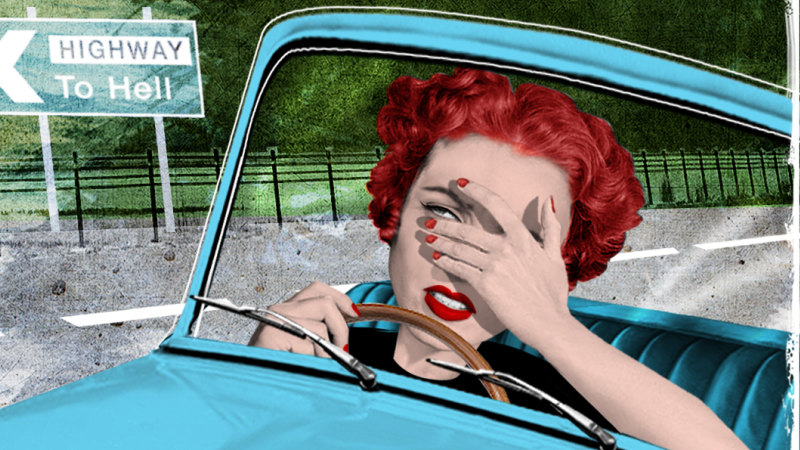[ad_1]

What are the symptoms?
Transport Accident Commission (TAC) chief executive Tracey Slatter says physical symptoms of driving anxiety can resemble those of other types of anxiety: a racing heart, rapid breathing, a dry mouth, tightness in the chest, hot or cold flushes, shakiness, nausea, restlessness, racing thoughts and worry.
Other symptoms include people refusing to drive or avoiding particular conditions or situations, she says. “Behavioural signs might be avoiding certain conditions or situations, preferring to be a passenger, verbalising their fears and so on.”
According to Beyond Blue, one in four Australians will experience anxiety at some stage in their life. However, one of Taylor’s studies suggests more than 50 per cent of the population have experienced anxiety around driving.
What causes driving anxiety?
Dr Amanda Stephens, a senior research fellow at Monash University’s accident research centre, says the most common cause of driving anxiety – for drivers who can recall when their anxiety began – is crash-related. “This includes involvement in a crash, concern over a crash or knowing someone who had been involved in a crash,” Stephens says. “Criticism from others was another source of anxiety.”
Sometimes, as in my case, the anxiety can begin without an identifiable trigger.
The origin or cause of driving anxiety may also influence whether the severity is mild or extreme, Stephens says. “Those whose anxiety was related to crash involvement often have higher anxiety over driving compared with others who either did not know when their anxiety started or had different onsets,” she says.
For those who experience the condition at low levels, driver anxiety may not interfere with life or driving behaviour, but at the higher end of the scale, people may avoid certain roads or stop driving altogether, Stephens says.
What can you do about it?
If you are driving and experience symptoms of anxiety, Slatter advises pulling over and taking a break. “Being able to identify when your mental state is affecting your ability to concentrate on the road is important for everyone’s safety,” she says.
Loading
Longer term, the social stigma around driving anxiety and the societal expectation that people drive and find it easy to do can make it hard to seek help, Taylor says. “But people are not alone – their experience and feelings are valid, and it is possible to work through what they are going through, with whatever support they find helpful to them, whether it be friends and family, a self-help resource, a mental health professional and/or a driving instructor.”
There are also organisations such as Amber Community that work with people affected by road trauma.
For learner drivers, or those without a licence, who experience anxiety about driving, Lydia Kendray, the RACV’s driver training operations manager, says it is critical to find a driving instructor who is a good fit.
“An ideal supervisor will be one who is patient and who will provide a lot of positive reinforcement,” she says. “If you don’t have a friend or family member that you feel at ease with when driving, it can be useful to work with a professional driving instructor.”
Make the most of your health, relationships, fitness and nutrition with our Live Well newsletter. Get it in your inbox every Monday.
[ad_2]
Source link